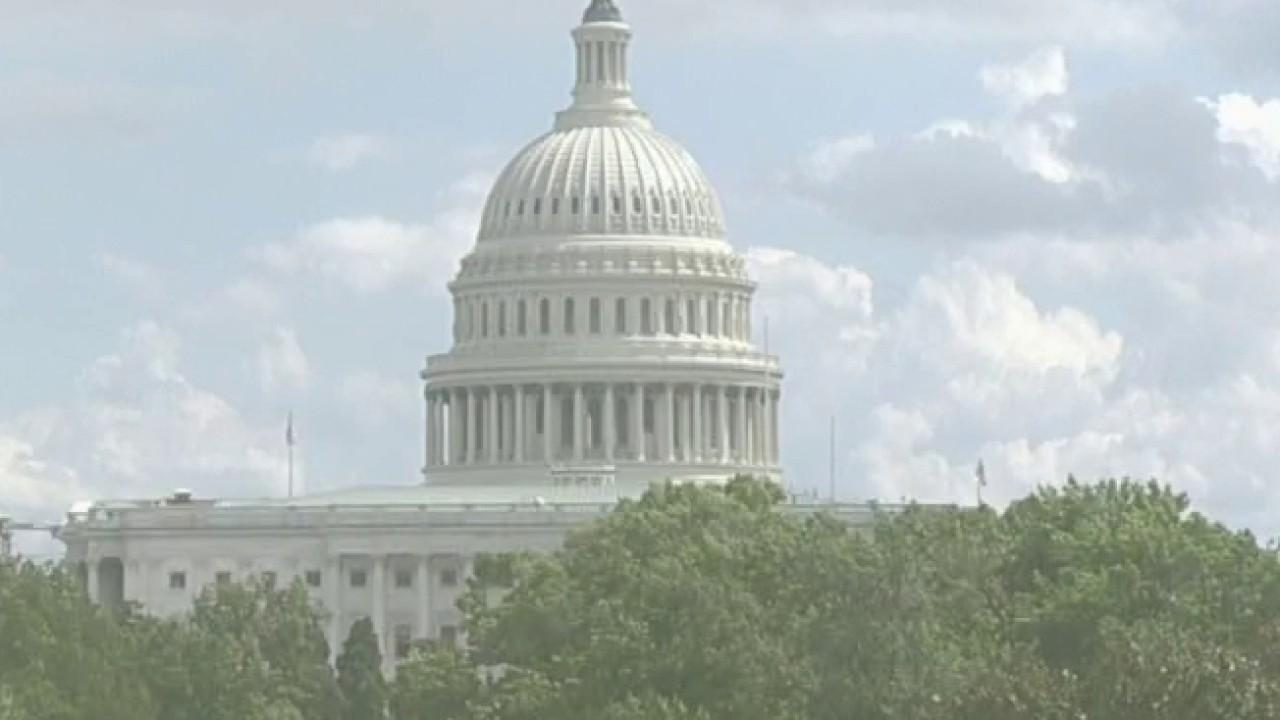These 3 numbers will tell you everything you need to know about your chances of a second stimulus check
Hope for a second stimulus check -- but prepare to go without one
Across America, the economy isn't looking very good. Although June's unemployment numbers showed there were 4.8 million jobs added, the unemployment rate is still at a record high.
SECOND CORONAVIRUS STIMULUS CHECK COULD FACE SOME OPPOSITION
More states are also shutting down for a second time, and the economy is likely to falter as coronavirus cases rise nationwide. If you're worried about your economic future and hoping for a second coronavirus stimulus check to shore up your finances, you aren't alone, and your concerns are likely justified.
Sadly, even though Americans clearly need more stimulus money, there's no guarantee lawmakers will provide it. If you're hoping and waiting for a second stimulus check, you'll want to watch these three numbers, which are the clearest indicators of whether another coronavirus payment will come your way.
1. The number of coronavirus cases
Throughout the United States, there were 3.36 million confirmed coronavirus cases as of July 11. And the Centers for Disease Control and Prevention has issued a warning that both case counts and total deaths due to the virus could rise precipitously in the next few weeks. As the number of COVID-19 patients goes up, it's likely an increasing number of states will slow or pause their reopening process and perhaps even issue more shelter-in-place orders. Consumer demand is also likely to decline dramatically if people become more fearful of the virus.
WHEN AMERICANS COULD RECEIVE THE CASH FROM A SECOND STIMULUS CHECK
With fewer people spending money and more businesses likely closing again, demand will rise for the government to offer more financial relief -- and fast. A second stimulus payment would quickly get money into the hands of the public, preventing disasters such as rising evictions and foreclosures and helping to ensure people have money to spend at businesses that are still open.
Sadly, the greater the spike in the number of cases and the more states that impose new restrictions, the more likely it is that the government will provide a second direct payment in response to a deepening crisis.
2. The unemployment numbers
Both May and June's job numbers were surprising, as they showed unemployment falling when many expected it to rise. And some administration officials used the fall in jobless claims as a reason for not rushing into passing a second stimulus check.
SECOND STIMULUS CHECK STILL ON THE TABLE DESPITE BETTER-THAN-EXPECTED JOBS REPORT
But the fact remains that the unemployment rate is still extremely high. There are millions of Americans without work, and more layoffs have become permanent instead of temporary ones as some businesses shut their doors for good. If jobless claims start rising again and the unemployment rate climbs higher, the chances that lawmakers will provide another stimulus payment will go up dramatically.
That's especially true since it's less expensive for lawmakers to authorize one-time payments for American families than to provide extra unemployment money every week for months on end. Many lawmakers on the right have also expressed wariness about continuing the extra $600 in extra weekly unemployment benefits the CARES Act offered beyond the end of July out of fear that doing so will slow the pace of the economic recovery.
EXTRA $600 IN UNEMPLOYMENT BENEFITS ENDS NEXT MONTH AS MILLIONS OF AMERICANS REMAIN OUT OF WORK
As many as 67% of workers receiving the expanded unemployment benefits are getting more money now than they made on the job, so Republicans are afraid they may not want to return to work. It'll be much easier to get those on the right on board with a second stimulus check, especially as some have already put forth their own proposals for one.
3. President Trump's poll numbers
President Donald Trump has long touted his performance on the economy, including the low unemployment rate prior to the coronavirus crisis. The President understands that Americans will likely hold the country's chief executive accountable when the economy is performing poorly -- and if his poll numbers keep dropping, he's likely to push for more stimulus money to help bolster his reelection campaign.
WHAT WILL THE NEXT VIRUS RELIEF BILL LOOK LIKE? CONGRESS MULLS STIMULUS CHECKS, BACK-TO-WORK BONUSES
With the first stimulus payment, the President wanted to be sure Americans knew where the money was coming from, putting his signature on the payments that went out via check and sending a letter to Americans thanking Congress for working with him to make the funds available.
He's already touting a second generous payment, and if he feels his reelection campaign is in serious trouble because of the economic impacts of COVID-19, he'll almost assuredly dial up the pressure on Republicans to make that happen soon so it's fresh in the mind of most Americans when they go vote in early November.
Hope for a second stimulus check -- but prepare to go without one
If you keep a close eye on these numbers, you'll get a good idea of whether lawmakers will act to provide more COVID-19 money or not. Of course, even if the economy looks bleak and coronavirus cases rise, there's still no guarantee lawmakers will be able to find a viable compromise to provide more funding to Americans. So while there's plenty of reason to hope for more money, you need to be prepared in case it doesn't come.
TRUMP BACKS SECOND STIMULUS CHECK, BUT SOME DEMOCRATS, REPUBLICANS WEARY OF ANOTHER PAYMENT
This means getting your finances recession-ready by looking for spending cuts you can make; ensuring your investments are diversified and that you don't have money in the market that you'll need soon in case of another market crash; bulking up your emergency fund; and looking into other sources of aid if you need it.
GET FOX BUSINESS ON THE GO BY CLICKING HERE
